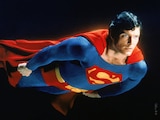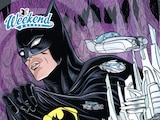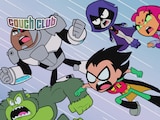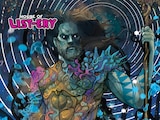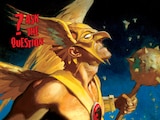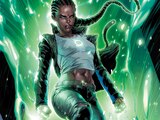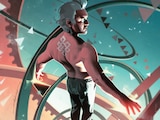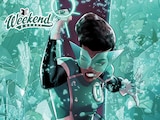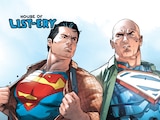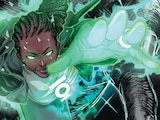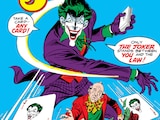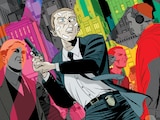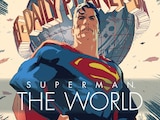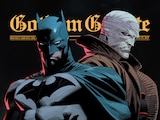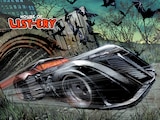DC’s newest YA graphic novel, Superman Smashes the Klan, is a story with layers. Written by Gene Luen Yang and illustrated by artist team Gurihiru, the book is—obviously—about Superman taking down some "bigots in bedsheets" (a phrase I've pulled from the book that is absolutely *chef's kiss*), but it's also a story about being true to oneself in the face of harsh scrutiny and fear.
Set in 1946, the book centers on a Chinese-American family, the Lees, who move out of Chinatown and into a different part of Metropolis. There, they come face-to-face with a seriously evil hate group and the Man of Steel himself. And while Tommy Lee finds his place quickly and easily, his younger sister Roberta struggles with feeling generally out of sync with the world around her.
Let’s break it down!
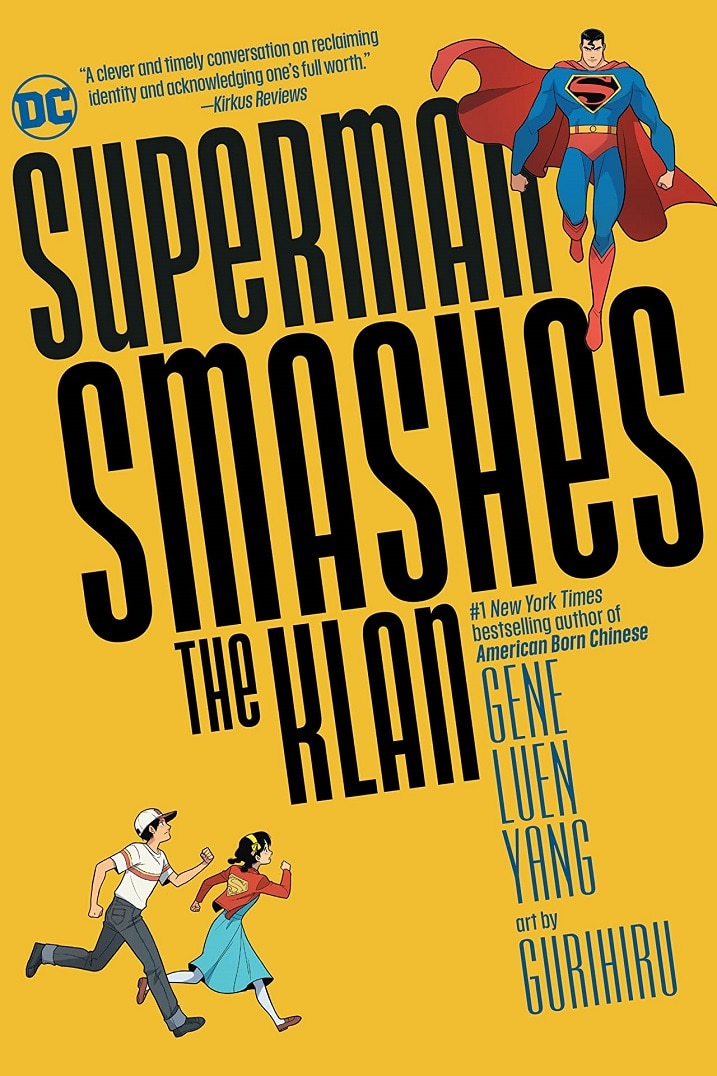
Cover Crackdown:
Much like a yellow traffic light, the mustard-yellow background of the cover of Superman Smashes the Klan tells readers to pause and pay attention. It's very title-forward, focusing instead on the text rather than the characters, but the title really does catch your attention. (Who doesn't want to see Supes smashing some racists?) I also love how the characters are nearly the same size. It shows that although this is a Superman story, it's not solely his.
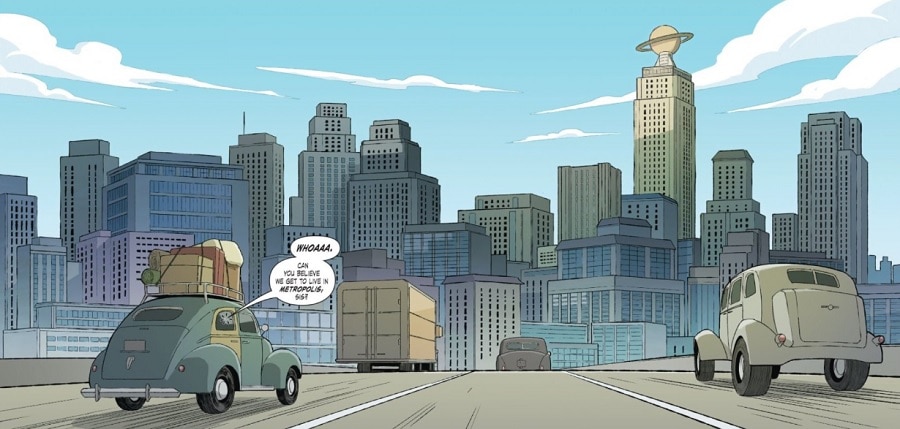
Tell Me a Story:
Roberta and Tommy Lee are the children of the Metropolis Health Department's newest Chief Bacteriologist, and as such, find themselves moving to a completely different—some would say "nicer"—part of Metropolis. Thanks to their new neighbor, Jimmy Olsen, who just so happens to manage a local community center baseball team, Tommy makes friends quickly when he proves to be an ace pitcher. This rankles the team's current pitcher, Chuck Riggs, but it really rankles Chuck's uncle, the Grand Scorpion of the Klan of the Fiery Kross, a robe-wearing white supremacist group that aims to "burn away America's impurities." They leave their flaming mark on the Lee's lawn, and the morning after, Daily Planet reporters Lois Lane and Clark Kent arrive to document the story.
Clark attempts to pay attention, but we all know how easily distracted he can get. And he's even more distracted than usual after a battle with a Nazi villain who relied on an unknown green power source that gave off a weird-yet-familiar smell and has Clark seeing strange visions of aliens who tell him things about himself that he doesn't (yet) want to believe.
Although the two situations might seem disparate at first glance, there's a connection just waiting to be revealed—and revelations about what it means to be "different" to be made.
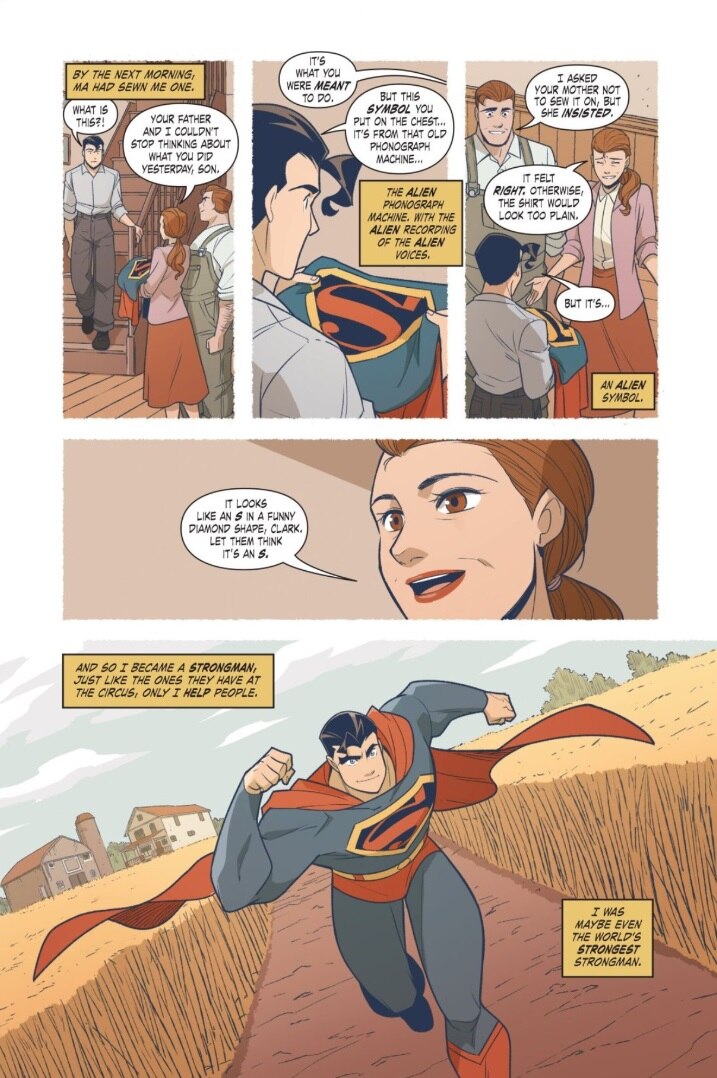
Let’s Talk Art:
Superman Smashes the Klan is a full-color book, but there's a muted quality to all of the tones—even Superman's outfit—that works nicely with the book's historical setting. The reds are slightly dusty, the greens are more sages and sea foams instead of bright grasses. They all work beautifully together to make the book feel aged without seeming antique.
But I think the characters’ looks are the true standouts when it comes to the art in this book. Gurihiru nails the character of Superman down to the forehead curl, and the diversity of the other characters is nicely varied without ever resorting to problematic stereotypes.
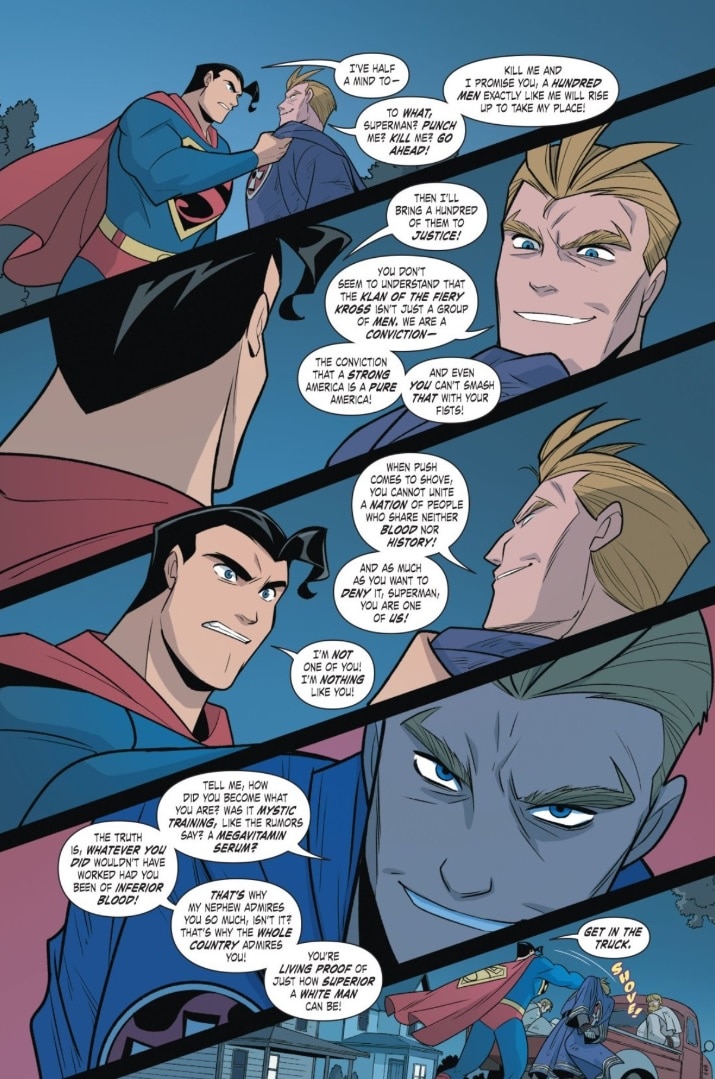
Dialog Discussion:
Much like Superman when he's smashing, Gene Luen Yang pulls no punches with the dialog of Superman Smashes the Klan. I literally flinched more than once while reading, thanks to the brutal honesty with which the blatant racism is portrayed. It's a book that deals with the worst of the worst kind of racists, and, sadly, accurately reflects the culture of a big city in the 1940s—mixed, but not entirely happy about it.
Characters threaten children and spew vitriol with a passion. It's not easy to read at times, but I appreciate being made uncomfortable while doing so. The topics in this book aren't comfortable ones, but a frank discussion of them shouldn't be shied away from.
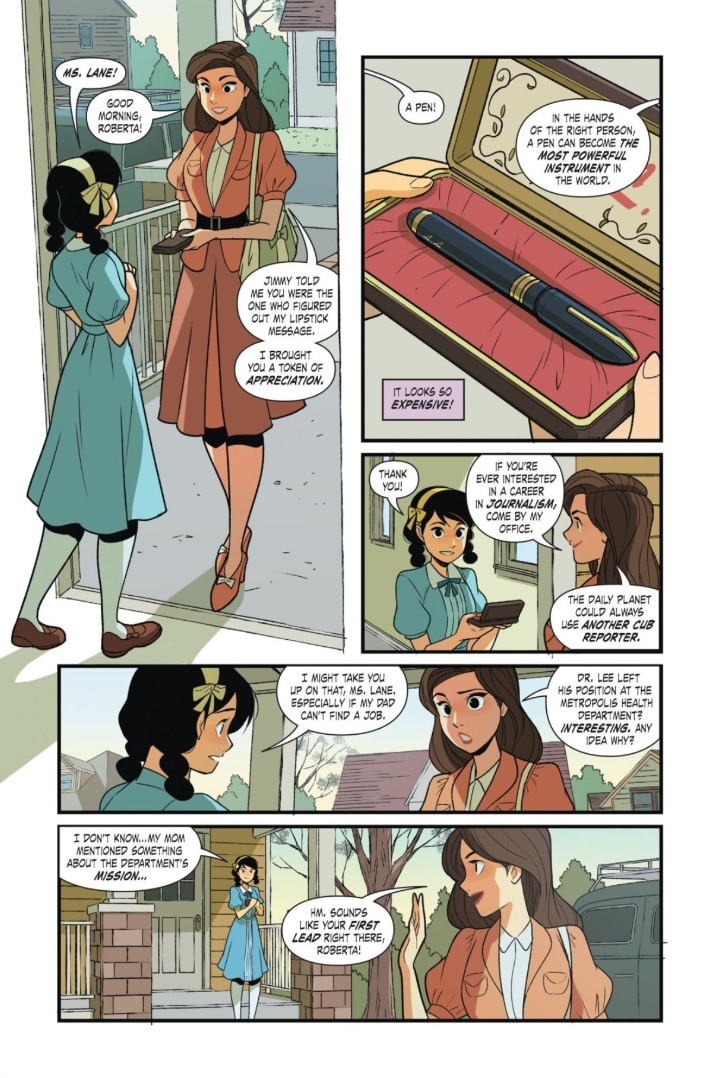
Voted Most Likely:
You might expect that, being a book about Superman, I'd suggest that Superman Smashes the Klan would be voted "Most Popular" in its high school yearbook. However, given the complexities of the book, and how much Roberta's story is equal to the Man of Steel's in it, I'd say it would more accurately be named "Most Likely to Change the World." Both of those kids are going places, and I don't just mean into the stratosphere.
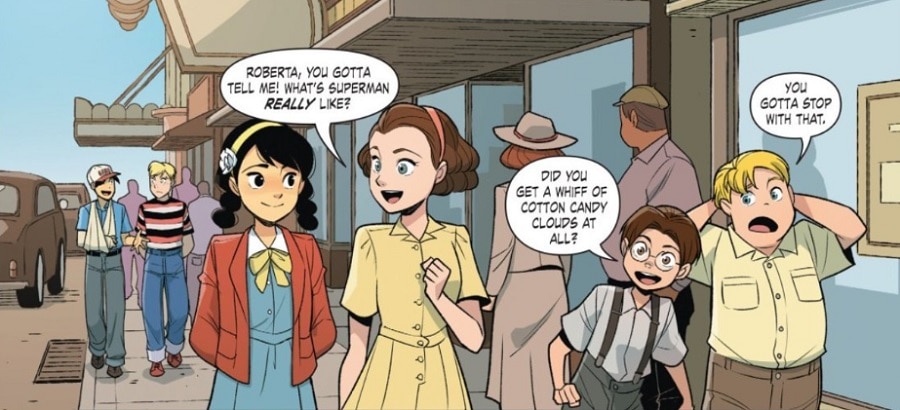
Most Crushworthy Character:
This might be an unexpected choice, but I fell pretty hard and quickly for the random little boy from the community center who's convinced that Superman smells like cotton candy clouds. I love how fixated he is on that one aspect of Superman's person, and it's something I'd never thought about before. (In my mind, Superman smells like clean wind, newsprint and spandex.) Sure, he's a character who doesn't even have a name, but he feels like an avatar for all of us Superman fans who feel like we know Supes well enough, but always want to know more.
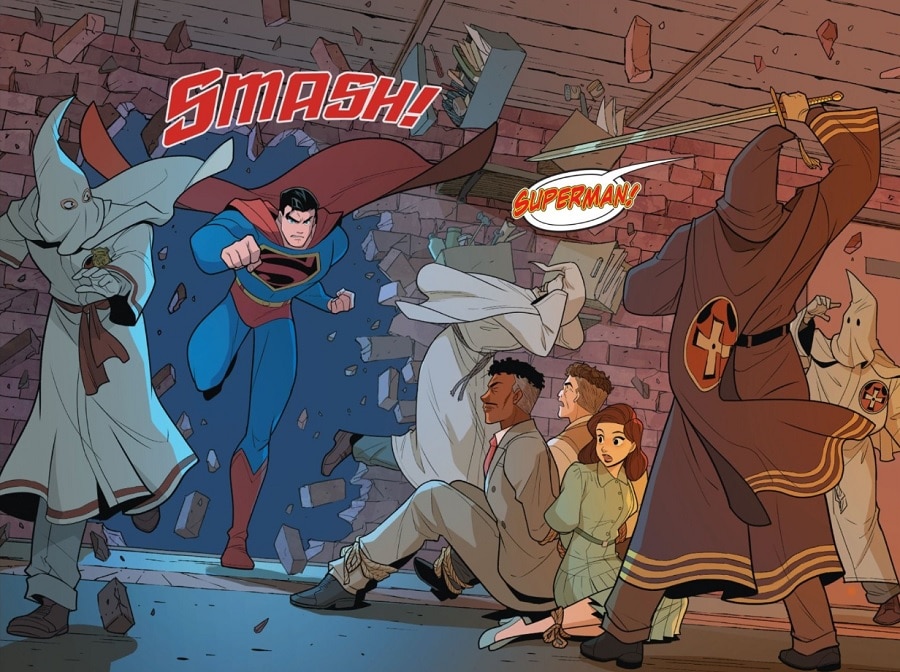
The Final Word:
The way Yang connects Superman's story to Roberta's is something to be applauded. Superman's often seen as an American hero, but it's important to remember that he's more of an immigrant than anyone else on the entire planet. And although he's nearly invincible, he's got feelings just like the rest of us, including those of inadequacy and fear of the unknown.
Reading about Superman—who, in most people's eyes, is a person who has it all together—experiencing similar internal turmoil to a young girl is extremely powerful. And that aspect of the book, combined with the straightforward commentary on racism (and, thankfully, its downfall), makes for a story that should be read by people of all ages, Superman fan or no and YA fan or no.
Superman Smashes the Klan by Gene Luen Yang and Gurihiru is now available in bookstores, comic shops, libraries and as a digital graphic novel.
When Mandy Curtis isn’t reading books by Leigh Bardugo or Sarah J. Maas, she’s dreaming of busting bad guys with Wonder Woman—if Steve Trevor’s there, too, she won’t complain—and writing about YA fiction and pop culture at Forever Young Adult. Follow her on Twitter at @mandyannecurtis.
Not sure what you just read? Click here for the skinny on our Book Breakdowns.

